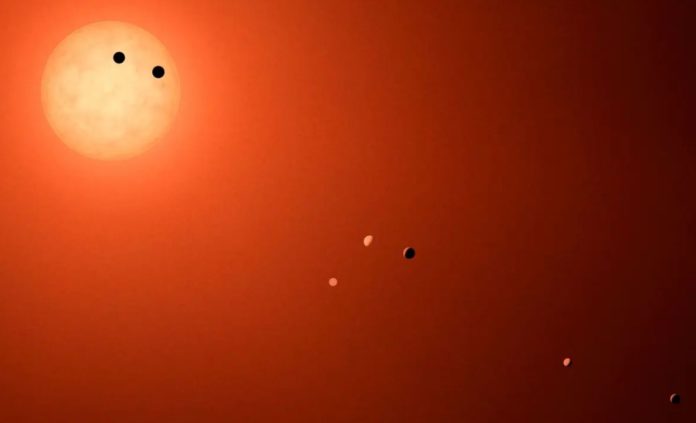Identifying an extrasolar planet can be quite time-consuming. NASA astronomers have delegated the work – to a machine capable of learning.
The list of 4569 validated extrasolar planets has grown – and not too short. NASA astronomers recently added 301 new planets in one fell swoop. This is thanks to a neural network that the researchers trained to differentiate between real planetary signals and false positive ones. With their work, NASA researchers are following a trend that has been spreading for several years. Astronomers are increasingly turning to artificial intelligence to help them find planets outside the solar system.
Planet candidates in abundance
Just 20 years ago, finding extrasolar planets was a tedious business. But times have changed. NASA’s Kepler telescope and its successor, the Tess telescope, systematically comb the sky for stars that are periodically darkened. This is considered to be a possible indication of a planet that keeps passing by its parent star.
The success of these space missions confronts the researchers with a new problem. You have now registered more than 100,000 signals behind which a previously unknown planet could be hiding. The signal could just as well come from another event, for example from two orbiting stars. Astronomers are faced with the difficult task of separating the wheat from the chaff.
This is a multi-step process that only ends when the existence of a planet can be confirmed by subsequent observation. However, such follow-ups are time-consuming and expensive. Therefore, astronomers endeavor to identify in advance those candidates that are most likely planets. Artificial intelligence comes into play in this process, known as validation.
The adaptive algorithm called Exominer works in the same way as an experienced astronomer to validate the potential planetary signals. The algorithm checks the light curves of the stars using certain rules and rejects those that do not fit into the scheme.
To train the algorithm, the researchers fed it both data from confirmed planets and false-positive signals. The effort paid off. In a test, Exominer correctly identified 93.6 percent of the planets. Other algorithms had a success rate of 77 percent at best. This means that there is a high probability that the 301 planets validated by Exominer are real. Nevertheless, they still have to be confirmed by subsequent observations.
A hopeless case
Artificial intelligence can not only validate planetary candidates. As astronomers from Geneva and Bern recently showed, it can also help to discover previously unknown planets. The group was interested in stars with multiple planets. In such systems, the interaction between the planets can cause the timing of a planetary transit to change. Instead of at regular time intervals, the planet passes the star sometimes earlier, sometimes later. That makes it difficult to prove the planet. If this is also small (and the darkening of the star is consequently small), the task can be hopeless. The irregular planetary signal can then hardly be distinguished from natural noise.
The AI can also help in such cases. Adrien Leleu’s group from the University of Geneva trained a neural network to recognize river-like patterns in a diagram that shows the brightness fluctuations of a star measured over a longer period of time. The more such a river meanders in a diagram, the more the orbital period of the planet varies.
The analysis of the star Kepler-1705 showed that the neural network is able to discover previously unknown planets. In addition to an already known planetary candidate, the algorithm found indications in the flowchart for a second candidate that is in resonance with the first. This means that the cycle times of the two candidates are in an integer ratio. From the variation in the orbital times, the researchers were able to calculate the mass of the two candidates (4.5 and 5.4 earth masses) and thus confirm that they are actually planets.
Both planets are roughly twice the size of the earth. We now know many of these super-earths, says Leleu. But only a few people know not only the radius but also the mass. In many cases, therefore, no statements can be made about the density and composition of the super-earths. Leleu is therefore not only expecting artificial intelligence to discover new planets. It can also help to understand them better.
Image Credit: Nasa / JPL-Caltech
You were reading: Is that a planet? Ask the artificial intelligence
